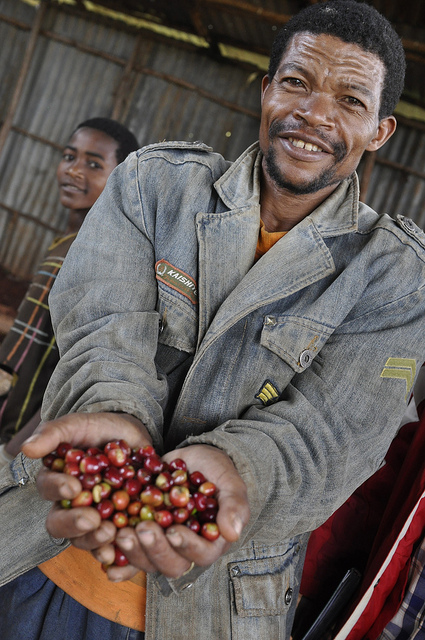Type of Coffee: Limu Variety: Limu Heirloom Area: Limu, Djimmah Altitude (masl): 1800-2000
About
This coffee comes from within the Limu area within the Greater Djimmah region. Limu coffee, is not just “Washed Djimmah”. It has its own special genetic profile and its own unique cup profile, which is like a smooth red wine; an elegant coffee from the Highlands of Southeast Ethiopia.
All sundried coffee from Limu has been traditionaly exported as “Djimmah”, while all washed coffee from Djimmah has been exported as “Limu”. This approach, unfortunately, contributes to the incorrect perception that “Limu” is simply a “washed Djimmah” when in actual fact, coffees from Limu are quite distinct and beautiful.
CCS works with a private company that purchases coffees through the ECX, where the majority of Ethiopian coffee is sold. Once coffee is purchased from auction, our partner hand sorts and prepares the green coffee to CCS’ quality specifications. The selection of the coffees from the auction is of premium quality with CCS preferences in mind.
Washed Process
Coffee cherries, are delivered to the washing stations within four hours from the time they were handpicked from the trees. Coffee is then passed through a pulping machine. Once cherries have been depulped, the remaining coffee husks float through channels to an area where it is dried and stored to eventually be used as fertilization. The coffee seeds float through the water channels (“flotation”) and this process sorts the heavier more mature beans from the lighter, greener and less mature beans.
After flotation, the mature and dense coffee is moved to tanks full of water, where fermentation will take place. Fermentation removes the sugars that remain in the skin of the seed and the chosen process is determined based on the climatic conditions of the region the washing station is located. This process usually spans from 36 to 76 hours. Once sugars have been completely eliminated through the fermentation process, the coffee moves under the sun for drying in parchment.
The “washed process” is favoured for its stability. By eliminating the sugars in the fermentation process, the drying process is less risky as less microorganisms that can affect quality have the potential to develop. Secondly, washed coffee cup brighter, with more delicate characteristics. Acidity is highlighted.



